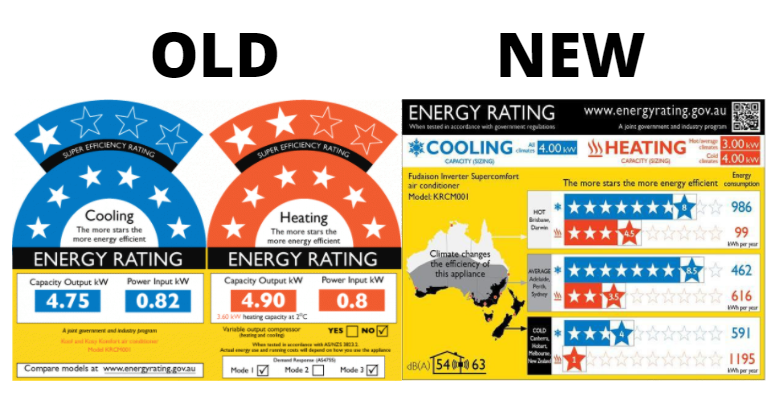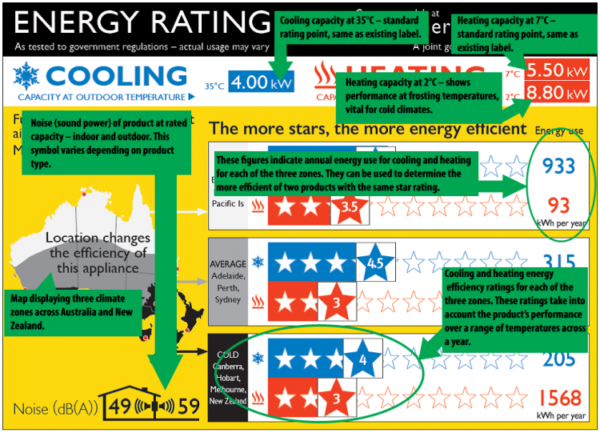How to read the new aircon energy label
Understanding the aircon Zoned Energy Rating Label
The Australian government has rolled out a new Zoned Energy Rating Label (ZERL) across Australia from April 1, 2020. The new air conditioning label considers the climate across the country by having 3 climate zones and provides more information on efficiency and energy consumption.
Are you confused about the new energy rating labels and how to choose your new air conditioner? We have collected information to help you out, keep reading to learn more.

How will the new air conditioner energy ratings help you?
The new rating labelling provides customers with specific information on using the air conditioner in different areas of Australia, including:
- How much heating and cooling the air conditioner will provide?
- How loud will the air conditioner be?
- How efficient is it?
- How much electricity will it consume annually?
Key features of the new Zones Energy Rating Labels
- The new label accounts for the three climate zones across Australia and New Zealand. For example, Brisbane comes in the Hot zone, Melbourne in the Cold zone and Sydney in the Average Zone.
- The capacity of air conditioners is measured in kW, annual energy consumption for heating and cooling in kilowatt-hours (kWh).
- Portable air conditioners need to display the Zoned Energy Rating Label.
- The efficiency and electricity consumption of the aircon depends on where you live.
- The label lists the noise level produced by the unit.
- It includes the capacity of the air conditioner for cooling (2kW) at one outdoor temperature (35 degrees Celsius) and for heating at two temperatures – 7 degrees Celsius (2.7kW) and 2 degrees Celsius (3.7kW).

Air conditioner labels
When you are checking the labels of air conditioners, keep the following things in mind.
- Compare air conditioners of the same/similar size.
- Compare the efficiency of the products which have the same labels, i.e, compare ZERL with aircon having ZERL labels.
How to use the new Zones Energy Rating labels?
- Location – Look at the label to see where you live, if you are in Brisbane or Darwin, you will be in the White Zone. Read the – White HOT ratings. While a family that lives in Sydney would read the Grey AVERAGE Zone.
- Find out the size of the air conditioner you need – Consider the size of the room/s you want to cool or heat, how much sunlight your rooms receive, and how well they are insulated.
- The best way to determine the correct size of the air conditioner is by speaking to your local air conditioning specialist. At Fallon Solutions, our trained technicians will evaluate the size of the space, assess the received sunlight and insulation and suggest the right aircon size.
- The capacity of the air conditioner should suit the space you are trying to cool or heat to ensure efficient, effective operation.
- Check the noise output – The lower the number, the quieter it is.
- Read the star labels – The blue stars show how efficient the system is at cooling and the red stars are for heating. Higher the numbers, the better the air conditioner.
- Check the energy consumption – The lower the number of kWh used, the better it is.
- Calculate the annual consumption of electricity by multiplying the kWh amount by the electricity tariff rate.
- For example, if the electricity tariff is $0.30 per kWh.
- Add the heating and cooling energy use i.e 933 and 93 kWH for the white HOT zone. 1026 x 0.29 = $297.54.
- So the estimated cost to run the air conditioner annually would be $297.54.
References: https://www.energyrating.gov.au/sites/default/files/documents/AC%20ZERL%20FS_FINAL.pdf, https://www.energyrating.gov.au/
